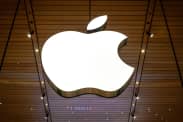Investors were wary when Luiz Inácio Lula da Silva returned for a third term as Brazil’s president 13 months ago. They have warmed to him since.
The iShares MSCI Brazil exchange-traded fund is up nearly 20% since Lula, as the 78-year-old leader is known, reassumed power last January. Local-currency bond yields have tightened by 300 basis points, or 3%. Ratings firms Fitch and S&P upgraded Brazil’s sovereign credit.
“On a zero-to-10 scale, Brazil today is a seven,” says Daniel Gewehr, head of Latin American equity strategy at Itaú BBA.
The good times could keep rolling. Brazil’s central bank, the most hawkish in any major market over the past few years, has slashed interest rates from 13.75% to 11.25% as inflation subsides, and is expected to hit 9% later this year. The boost to consumers and corporate borrowers should drive earnings of listed companies up 14% year-on-year at an index level, Gewehr predicts.
“We see the market as cheap, given the earnings growth,” notes Verena Wachnitz, a portfolio manager for Latin American equities at T. Rowe Price.
Domestic-related stocks look the most attractive in this environment. Gewehr is confident about car-rental leader Localiza and jewelry chain Vivara.
Varun Laijawalla, emerging markets portfolio manager at Ninety One, looks for tumbling rates to catalyze Brazilian real estate. He likes leading mall franchise Multiplan Empreendimentos Imobiliários and home builder Cyrela Brazil Realty.
Localiza is the only one of these picks that is a top-10 Brazilian stock. The index is dominated by commodities exporters Petróleo Brasileiro and Vale, and financials.
Wachnitz is keen on one financial name: B3, parent company of the Bolsa exchange. It should benefit as local investors shift from less-profitable fixed-income back into equities, and companies unfreeze the initial-public-offering pipeline, she predicts.
The effect of falling rates on big banks like Itaú Unibanco Holding and Banco Bradesco is less straightforward. Lower rates spell lower interest margins, but also fewer nonperforming loans and potential loan growth as money gets cheaper for corporates and households. Laijawalla says he is “flirting” with some Brazilian bank names. “The peak of the NPL cycle should read positively for future performance,” he says.
The biggest question mark over Brazil, though, remains Lula himself, whose social spending goals butt up against fiscal discipline. His government won some market benefit-of-the-doubt last year with a pledge to eliminate Brazil’s primary budget deficit (not including interest payments), but then quickly fudged it. Economists predict a gap near 1% of gross domestic product this year, propelling a total deficit around 6% of GDP.
“They’re walking backward in terms of addressing fiscal problems,” says Alberto Ramos, head of Latin America economic research at Goldman Sachs.
Another worry is Lula’s increasing influence over the central bank that quelled postpandemic inflation. Four of nine board members are already his appointees. They will take control by the end of this year, when President Roberto Campos Neto steps down.
That’s a threat to future inflation battles, even though the bank gained legal independence under Lula’s predecessor Jair Bolsonaro, says Arthur Budaghyan, chief emerging markets strategist at BCA Research. “Lula’s four members of the board are all on the dovish side,” he says.
A key political figure to watch, says Wachnitz, is Minister of Finance Fernando Haddad, who has tempered Lula’s populist instincts and become a favorite target of left-wing colleagues in the process.
“He is the only reasonable person in the government,” she says.






